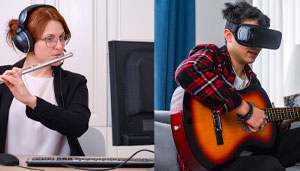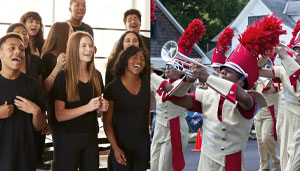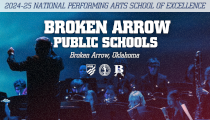Student Support and Academic Enrichment (SSAE) Grant Title IV, Part A of ESSA
By Jazzmone Sutton on March 16, 2020 music directors & adjudicators article Print∗This document is designed to inform music stakeholders about the Student Support and Academic Enrichment Grant that is allotted to their local education agency (LEA) under Title IV, Part A of the Every Student Succeeds Act (ESSA.)∗
Background
In December 2015, Congress enacted ESSA, which replaced the No Child Left Behind Act of 2001. Housed under Title IV, Part A of ESSA, there is a flexible block grant, entitled the Student Support and Academic Enrichment (SSAE) Grant. As defined by law, the purpose of the SSAE grant is:
“to improve students’ academic achievement by increasing the capacity of states, local educational agencies, schools, and local communities to —
• provide all students with access to a well-rounded education;
• improve school conditions for student learning; and
• improve the use of technology in order to improve the academic achievement and digital literacy of all students.”
As defined by the law, the term “well-rounded education” means:
“courses, activities, and programming in subjects such as English, reading or language arts, writing, science, technology, engineering, mathematics, foreign languages, civics and government, economics, arts history, geography, computer science, music, career and technical education, health, physical education, and any other subject, as determined by the State or local educational agency, with the purpose of providing all students access to an enriched curriculum and educational experience”
Funding of SSAE (Title IV, Part A)
Since the enactment of ESSA in December 2015, the SSAE Grant has consistently increased in funding and is currently set at $1.17 billion nationwide for the FY19 appropriations cycle. Although the allocated funding level has increased over the past two years, it has not yet reached its authorized amount of $1.6 billion.
Throughout the US, school districts have been allotted funds based on a formula set by Congress. School systems will then develop a comprehensive needs assessment and a comprehensive continuous improvement plan in order to apply to their state education agency.
SSAE Grant Funds – District Level
SSEA Grant funds usage must be used at the district level for each LEA.
• School districts receiving less than $30,000 are not required to conduct a “comprehensive needs assessment” and must allocate funds in at least one of the three areas listed: well-rounded education, safe and healthy school programs, or the effective use of technology.
• School districts receiving more than $30,000 must conduct a comprehensive needs assessment. SSAE funds spent by these school districts must be allocated towards all three areas listed. Districts must allot at least 20% for well-rounded education and 20% for safe and healthy school programs. The remaining 60% can be spent in a combination of the three areas of well-rounded education, safe and healthy school programs, and effective use of technology, with a 15% cap on technology including devices, equipment, software, and digital content.
A comprehensive needs assessment requires input from various stakeholders including (but not limited to): principals (all levels), school counselors, lead teachers, classroom teachers, enrichment/fine arts teachers, AIG teachers, parents, students, community members, and business members.
The comprehensive needs assessment must be completed once every three years when applying for the grant, but the assessment can be completed multiple times to reassess fund usage.
Summary
The SSAE Grant under Title IV, Part A of ESSA, is a flexible block grant distributed to the LEA via the state educational agency. These funds are a formula-based allotment that may be spent in three areas: well-rounded education, safe and healthy school programs and effective the use of technology. Contact your LEA federal grants program leader or coordinator to learn more about Title IV, Part A – the SSAE Grant.
Next Steps
Due to the SSAE Grant being relatively new to districts, some school district personnel are in the early stages of developing plans on how to use SSAE Grant funds. As an educational stakeholder, you can provide input on how SSAE Grant funds can be used in your district. Contact your local educational agency to identify who is responsible for federal grants and/or programs. Depending on the LEA, this person or department can have various titles including, but not limited to, federal grants director, financial advisor/director, SSAE/Title IV director, or Title I director. Your local arts supervisor or lead can also be a point of information and support when learning more about SSAE, Title IV, Part A.
After you contact the person responsible for Title IV, Part A or the SSAE Grant in your district, offer to participate or help create the district level comprehensive needs assessment. Each comprehensive needs assessment must include input from a variety of educational stakeholders.
Following the completion of the comprehensive needs assessment at the district level, plans should be created on how to use the funds at a district level that meet the percentage requirements for the three content areas. The federal grants director/coordinator will then submit these plans via the Comprehensive Continuous Improvement Plan to the North Carolina Department of Instruction.
The deadline for the SSAE Grant is in June for school districts in North Carolina. The funds will be approved for use during the upcoming school year.
Frequently Asked Questions
How can these funds support music education?
Music education is enumerated as part of a “well-rounded education.” SSAE Grant funds can support music professional development, resources, materials, activities, and experiences on the district level.
Can my school district spend SSAE funds directly at my school?
SSAE Grant funds must be spent on the district level, which in turn could directly affect your school or music education more broadly across your LEA (district).
What happens when my federal grants director/arts advisor does not respond to my requests?
As awareness of ESSA grows, so does the understanding of the SSAE Grant funds. Your first or third contact may not yield results, but offer help or suggestions that best suit the students in your school system.
A possible strategy could be to work with colleagues and create a proposal on how to use a portion of SSAE Grant funds that fits one of the three content areas and present it to school and district leaders including your arts supervisor. Follow up on a regular basis to learn how funds are currently being spent. Above all, keep a positive attitude and patience when offering help and support.
How do I find out how much my LEA is allotted through the Student Support and Academic Enrichment Grant?
Contact your local federal programs/grants coordinator for specific information on the allotted SSAE Grant funds.
Is music now a “core” subject?
The language “core subject” is from the No Child Left Behind Act. Now that the Every Student Succeeds Act has been enacted, it replaces NCLB. ESSA seeks to provide students with a “well-rounded” education, which includes music education. As ESSA and its language becomes familiar to educational stakeholders, music educators must promote music’s enumeration as a part of a “well-rounded” education.
Can the SSAE Grant be used at Title I schools only?
The use of SSAE Grant funding is determined at your district/LEA level, not school by school. A district can determine to use the funds only in Title I schools, but doing so must match with the district level needs assessment (e.g. providing equitable access to music education). This is why it is important to provide input on the comprehensive needs assessment.
Can Charter/Private Schools apply to SSAE Grant funds?
Due to Federal requirements, some charter schools could be eligible for SSAE Grant funds. Contact NCDPI Timothy Dryman at [email protected] to help determine the eligibility of the charter school. Private schools cannot directly receive SSAE Grant funds; however a private school can consult with the district within which it resides to receive SSAE funded programs to support its students following the private school consultation section of ESSA.
Jazzmone Sutton
Jazzmone Sutton is the music educator at Swift Creek Elementary School in Raleigh, North Carolina. She received a Bachelor of Music Education from the University of North Carolina at Wilmington in May 2010. Outside of her teaching, Jazzmone has been actively involved as a music education advocate as a member of the North Carolina Music Educators’ Association (NCMEA.) Throughout her years of service, Jazzmone has worked alongside other music educators to promote quality music education for all students. She has been a representative and advocate at the local, state and national level serving as either District Representative, Elementary Section Chair, President Elect of the organization. Jazzmone currently serves as the President of NCMEA.
Reprinted with permission of NCMEA, originally published in NC Music Educators Journal, Winter 2019
Most Recent Articles







